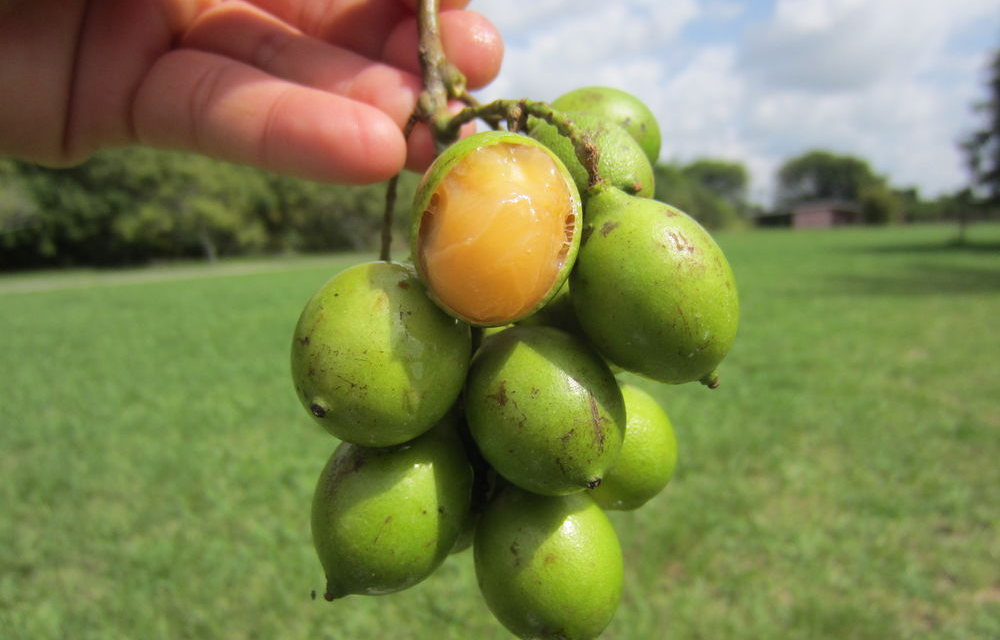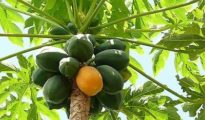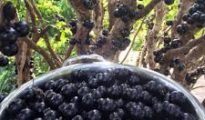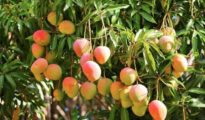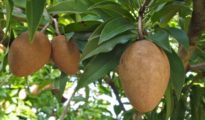What are Spanish limes? Spanish limes (Melicoccus bijugatus), or Mamoncillo, are clusters of fruit that resemble small limes, but have a tough, outer shell and a lychee-like inside. The taste has been described as a cross between limes and lychees, and, although they can be a little hard to open and eat, they're well worth the effort!

If you live in a tropical or subtropical climate and have enough room, you can learn how to grow Spanish limes, aka Mamoncillo. This fruit tree can get very big (up to 25 meters or 85 feet) and can spread out as well! We only recommend you grow Spanish limes if you have plenty of space and the climate to go along with it!
If you're interested in learning what are Spanish limes & how to grow them, keep reading this easy to follow gardening guide!
What Are Spanish Limes
As noted above, Spanish limes, or Mamoncillo, are a tropical fruit that grow in clusters of 12-15 on big trees. These fruits have a hard outer shells and a soft, jelly-like inside. They look like small unripe limes! Once you've consumed the fleshy, jelly-like part (the peeled fruit), there will be a large round seed inside. Contrary to popular belief, Spanish limes are NOT part of the citrus family, but rather are part of the Soapberry family.
The seed inside is big and white, and depending when picked, Spanish limes can taste anywhere from really tart and sour (when picked early) or sweet (when picked later!). Spanish limes cannot take temperatures below 25F (-4C). Once eaten, the seed can be roasted and consumed like chestnuts. The fruit itself is very healthy and is rich in iron, fiber, niacin, phosphorous, and vitamin A. The juicy pulp can make for excellent jellies, jams, pies, and drinks.
This fruit tree is native to Puerto Rico, Costa Rica, the West Indies, Bahamas, and South America. In Floria, the Spanish lime is grown both as a fruit tree and a shade tree, and usually grows on the side of the road.
Requirements for Growing Spanish Limes:
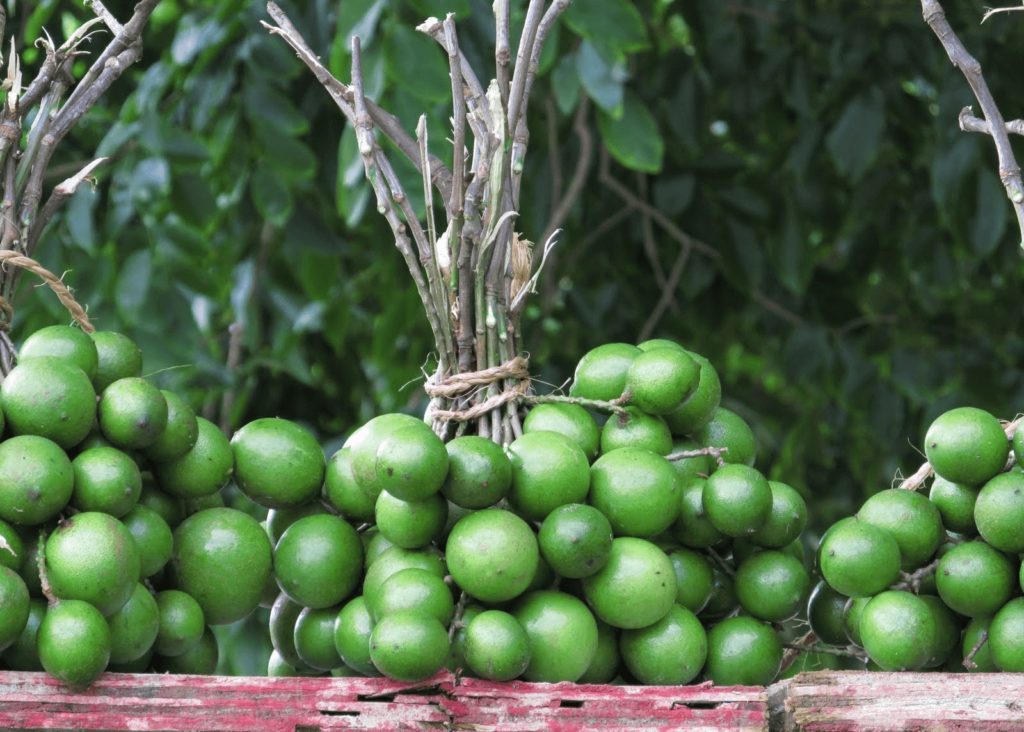
Sun:
Because this is a tropical and subtropical tree, it will need to be planted in a spot with full sun. Be sure that your Spanish lime tree will receive at least 6-8 hours of sunlight per day. Choose a spot in your garden that's protected from the wind as well.
Soil:
Spanish limes can grow in almost any type of soil, so long as the soil is well draining. You can start Spanish lime seeds indoors, and then transfer outdoors once weather permitting. You can grow the fruit trees in a big pot, and then transfer into the gorund.
Water:
Although Spanish lime trees are drought resistant, young trees (4 years old and younger), will need regular watering until they are established. Especially in hot climates, be sure your young tree gets plenty of water during its growing stage.
Propagation:
Spanish limes can be grown from seeds, but the best and easiest way to grow Spanish limes is to purchase an already grown young tree. Planting from seed can take a long time (8-10 years) to fruit. Once you've acquired the young tree, plant in an area with full sun and lots of space. Spanish lime trees are not self pollinating, and therefore you'll need a male and female. This is why we suggest you purchase a small tree from your local nursery.
Spanish Lime Care:
Fertilizer:
Young mamoncillo trees need to be fertilized with a complete balanced fertilizer every other month. Twice a year, apply manure around the tree. Once the tree is established (after 4 years), feed it with a phosphorous and potassium-rich fertilizer.
Pruning:
Regular pruning should be done to control its size. Mamoncillo trees can grow to be very tall, so controlling the height is very important.
Harvesting:
After about 4 or 5 years, your Spanish lime tree will start giving off fruits. This will happen in early summer and fall. You'll know it's ready to harvest once the fruit's outer shell becomes brittle and easily breakable.
Pests & Diseases:
Spanish lime trees can be susceptible to fruit flies and citrus black flies. Keep an eye out for leaf spot and green scurf as they can be common diseases in these types of trees.

